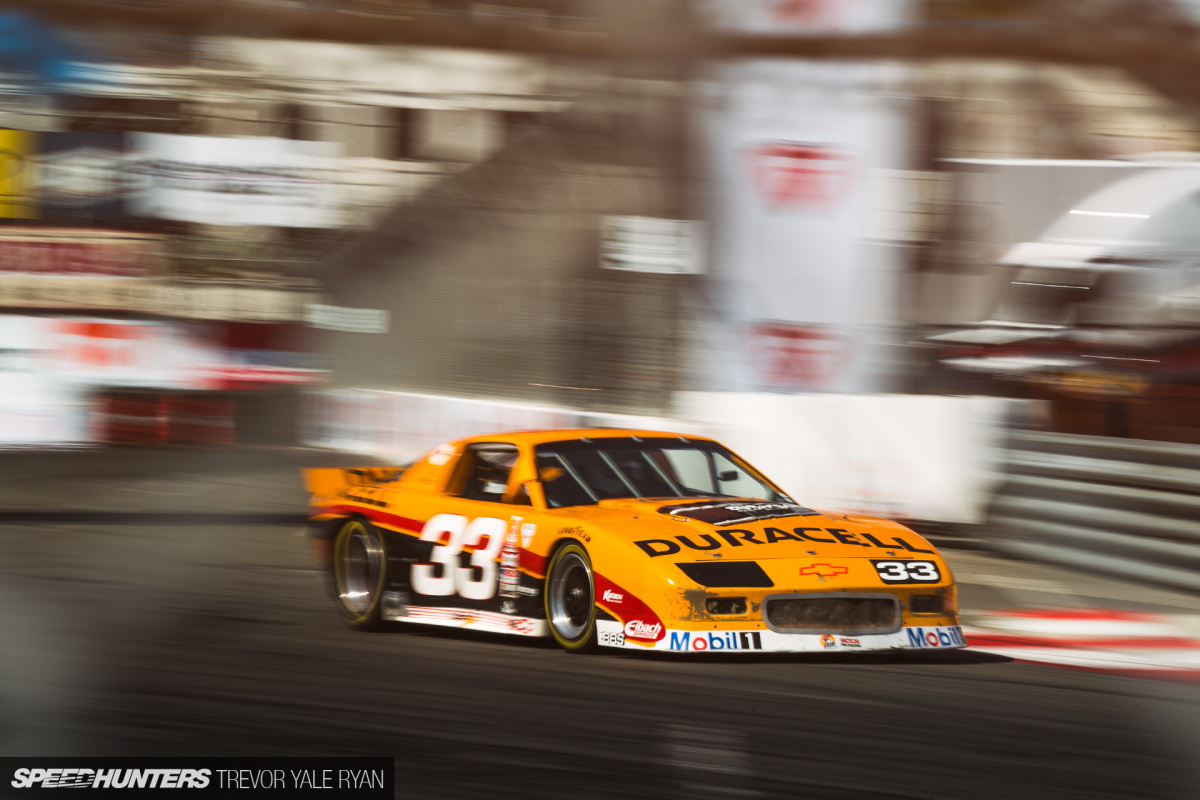
It seems it’s all too often that I see people asking for the settings a photo was taken with.
A preface is in order here, as the kit and the exposure information isn’t something you can simply copy over in hopes of replicating a particular shot. While they’re useful guidelines, the reasoning behind each shot is really what will prove practical in the real world. Just as my fearless leaders recently did, I’ve prepared a story with detailed information on the settings as well as the gear used for each shot. Just take it all with a grain of salt; the best way to learn is to practice.
In the spirit of fair game, all of the shots in this article were taken with standard general admission access, as Sara and I were only at the Grand Prix for one day. If you’ve missed Part I, you can check it out here.
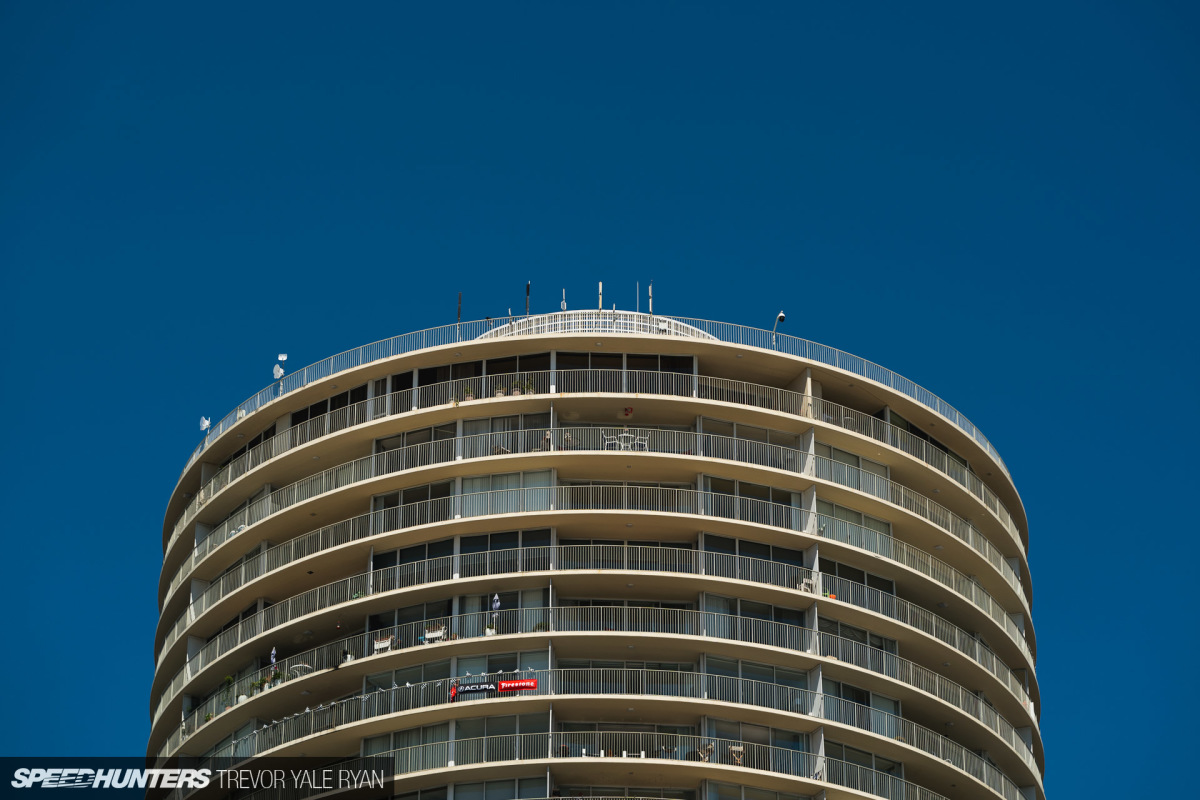
Sony Alpha a9, 70-200mm f/2.8 lens.
Exposure: 1/800sec at f/5.0 (ISO 100)
I’ll also point out that my main body is currently a Canon EOS 5D Mark IV, but I hardly used it during my single day at the Acura Grand Prix of Long Beach for two reasons. The first is that my 5D Mark III just came back from a service, so I wanted to shoot with it as much as possible to ensure my autofocus woes had been resolved.
Second, Sony Pro Support was out at the Long Beach Grand Prix and kindly offered me use of their flagship Alpha a9 for the day. It’s actually worked out quite nicely in the context of this article, since I would not only be shooting from the sidelines but also learning a new body.
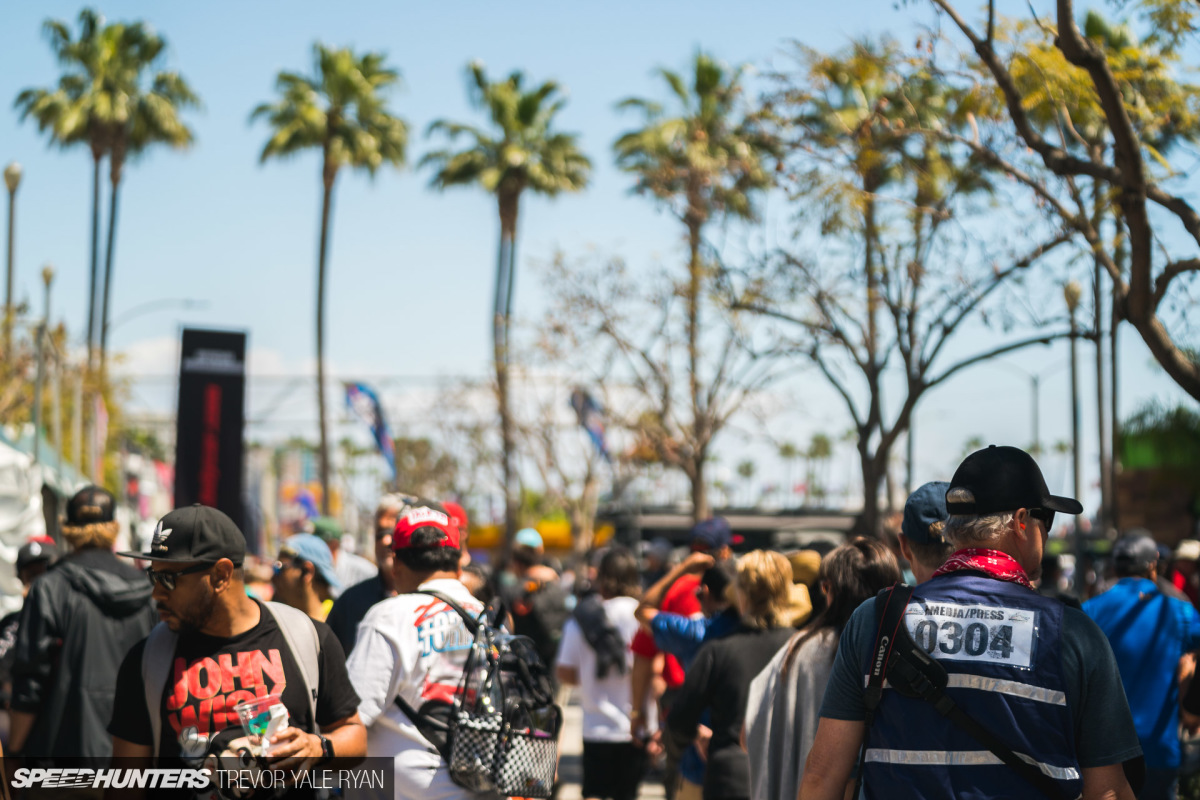
Sony Alpha a9, 70-200mm f/2.8 lens.
Exposure: 1/1000sec at f/2.8 (ISO 100)
This unfamiliarity with the primary tool I was using for the day meant that I was more or less on level playing field with someone who may have just purchased a new camera for the weekend. It also meant that some of my shots were a bit clumsy.
For example, I think the above image would be much better if the man on the left side were in focus rather than the one on the right, but I was still getting used to the ergonomics at this point and couldn’t switch quick enough while still maintaining the framing with the palm trees.
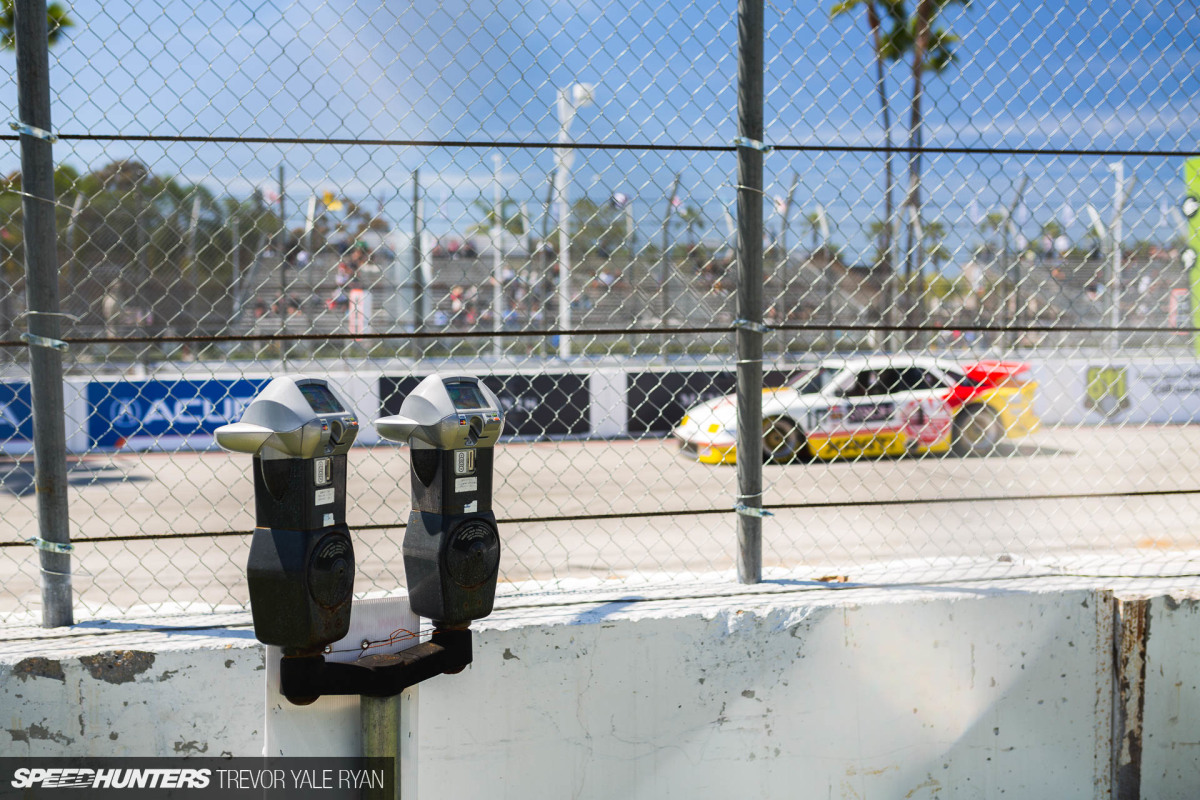
Canon EOS 5D Mark III, 35mm f/1.4 lens.
Exposure: 1/640sec at f/2.2 (ISO 100)
Still, hopefully my perspective shooting from behind two sets of fences without a media pass can prove useful to some of you who might just be getting started out with your camera. I know the constraints really helped me look at my own work with a fresh perspective.
Aperture & Shutter Speed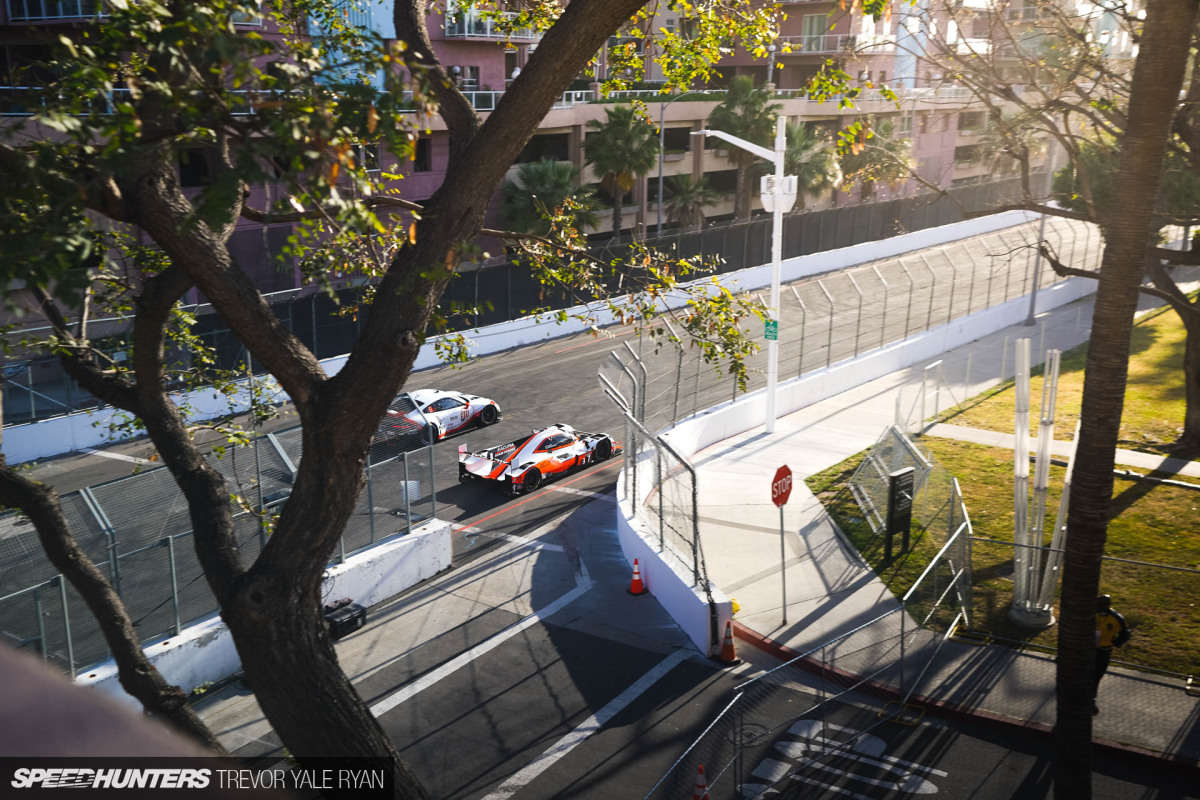
Sony Alpha a9, 16-35mm f/2.8 lens.
Exposure: 1/800sec at f/2.8 (ISO 100)
One of the principle tenets when shooting motorsport is your shutter speed. We’ve covered this in our photo guides before, but over the weekend I shot a few pairs of images in the same location, with the same lens, changing only my shutter speed. The first was at the straight heading into turn nine standing off to the side of the main footbridge; it doesn’t at all convey the speed of the cars.
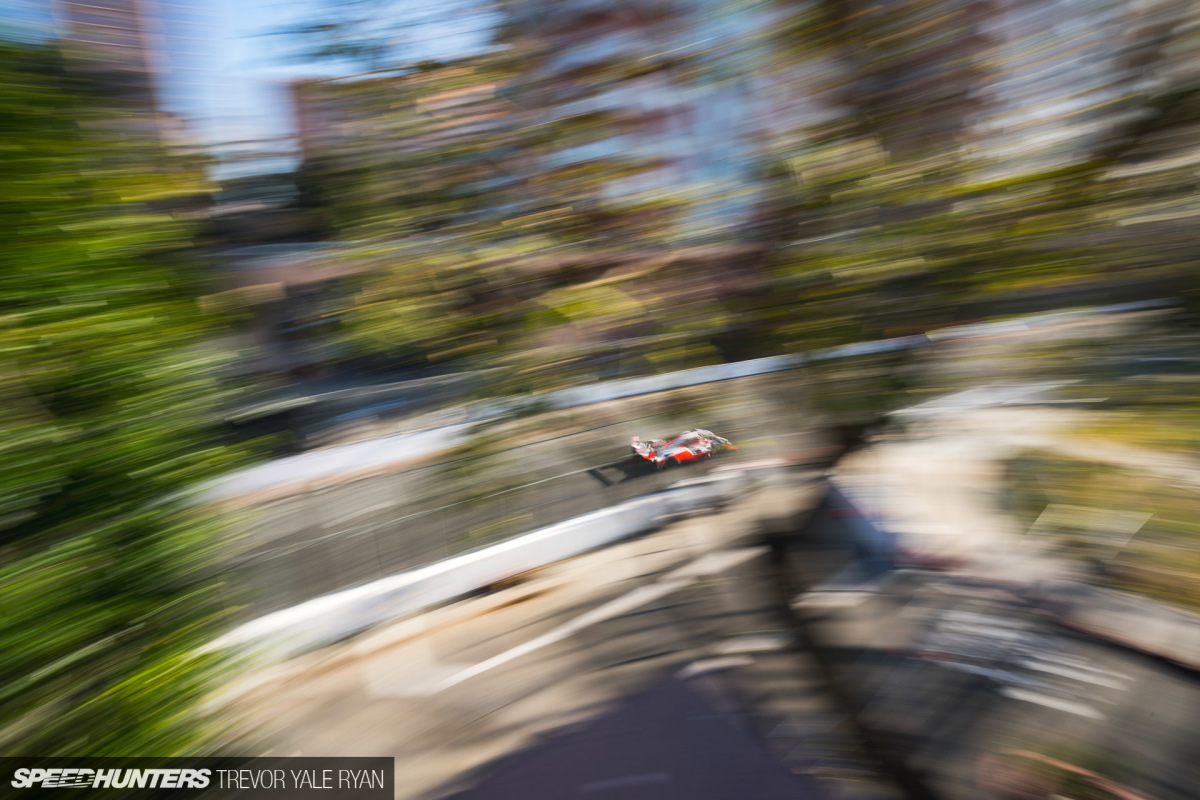
Sony Alpha a9, 16-35mm f/2.8 lens.
Exposure: 1/20sec at f/18 (ISO 100)
Here’s the same car a few laps later with a much, much slower shutter speed. I also shot this a bit wider (16mm versus 35mm above) to exaggerate the movement, as well as to make the imperfectly-captured subject a bit smaller in the frame.
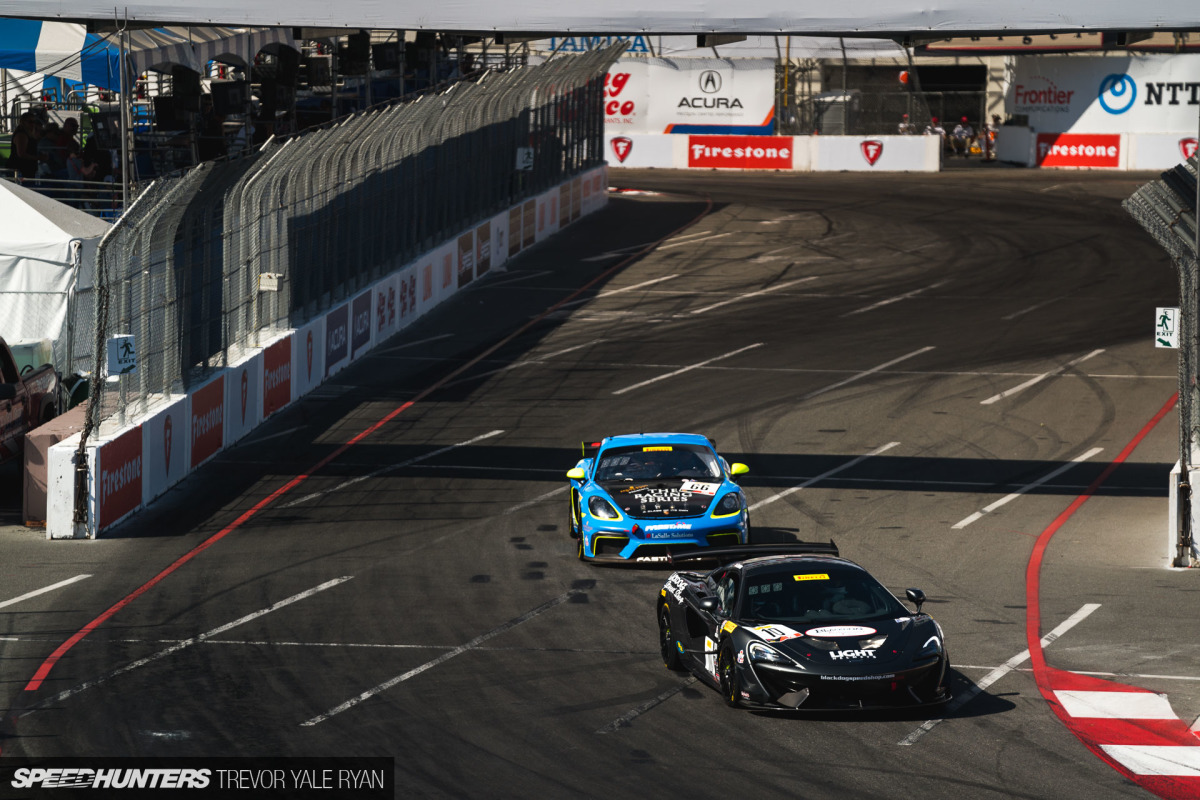
Sony Alpha a9, 70-200mm f/2.8 lens.
Exposure: 1/1250sec at f/3.5 (ISO 100)
This shot shows the entry to Turn 10 from the top of the grandstands, just barely shooting over the fence. Not a particularly interesting shot.
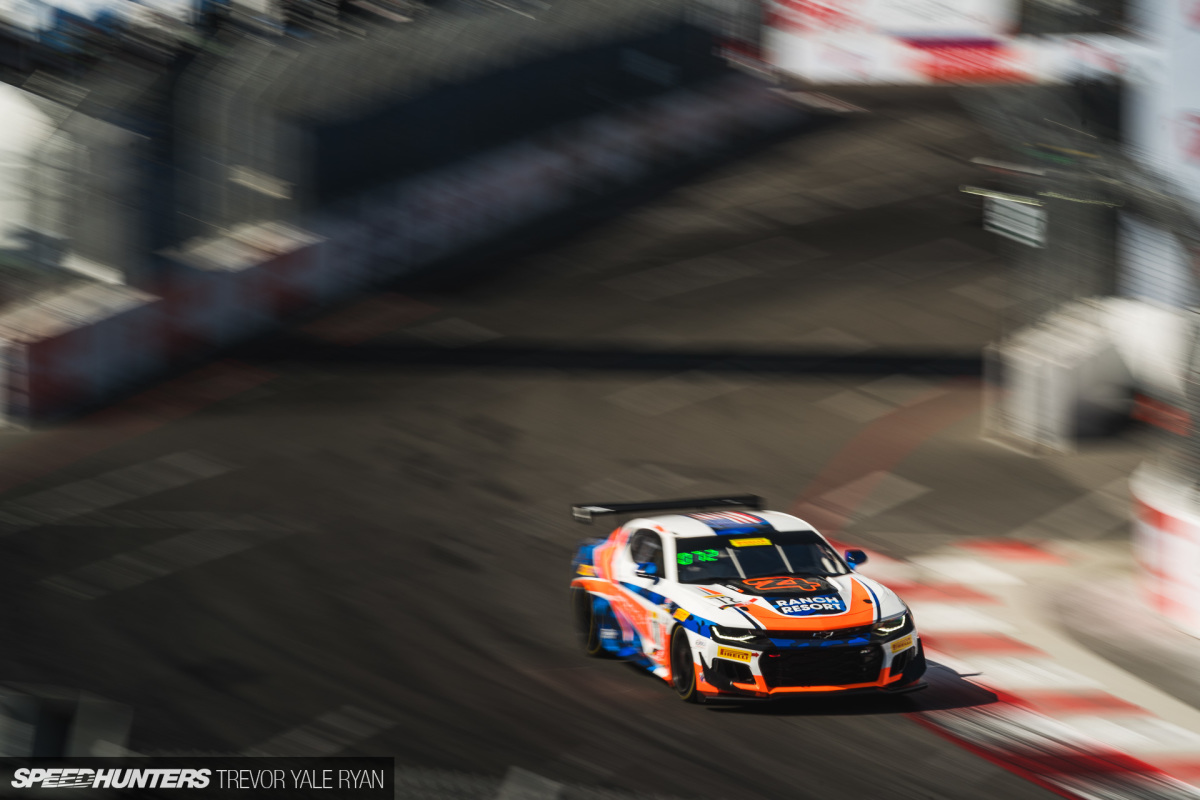
Canon EOS 5D Mark IV, 70-200mm f/2.8 lens.
Exposure: 1/20sec at f/20 (ISO 50)
However, slow down the shutter and and it’ll feel more like the race it is. A decent rule of thumb is to start at around your focal length and use this as your shutter speed. In other words, I was shooting from the grandstands at 200mm, so start at 1/200th and then, lap after lap, use slower and slower shutter speeds.
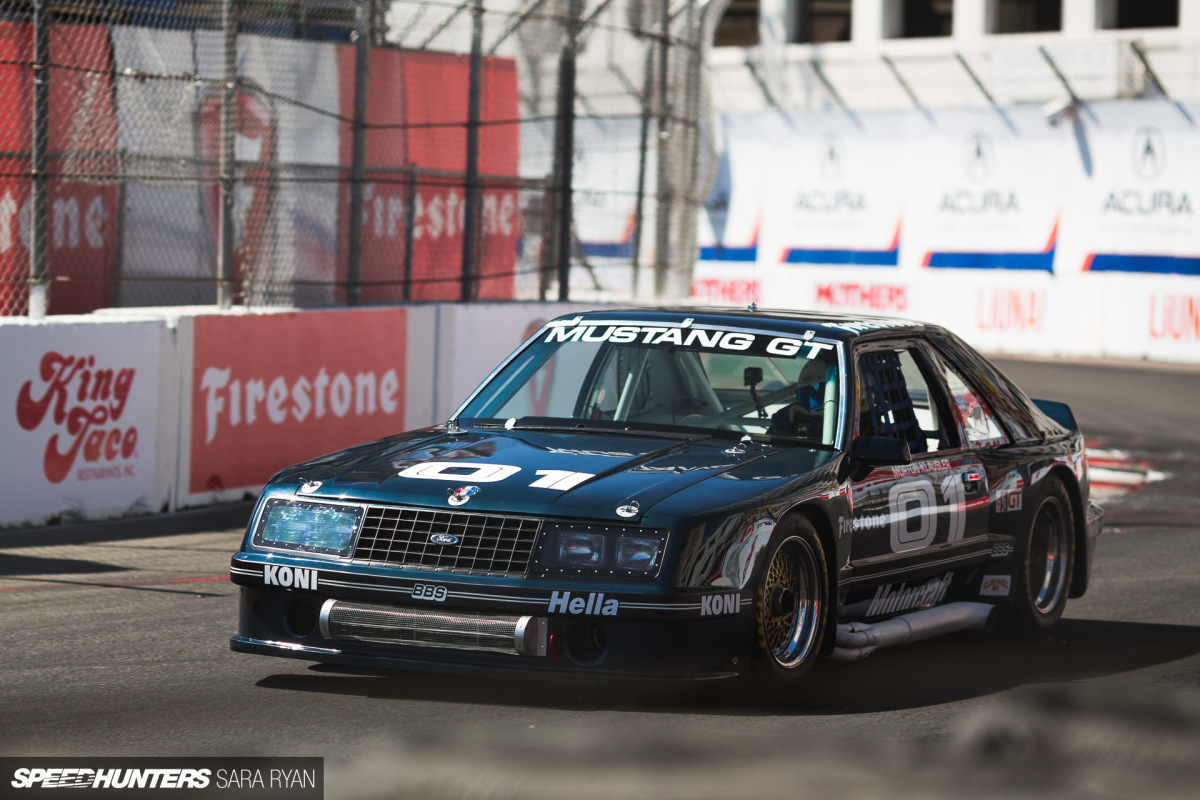
Canon EOS 5D Mark III, 135mm f/2.0 lens.
Exposure: 1/1250sec at f/2.8 (ISO 100)
For this shot, Sara isolated the subject by choosing a shallow depth of field paired with a quick shutter, nicely separating the foreground from the background. Post processing obviously plays a big role in your final result as well; you might recognize this shot from my faux film story covering the Historic IMSA class.
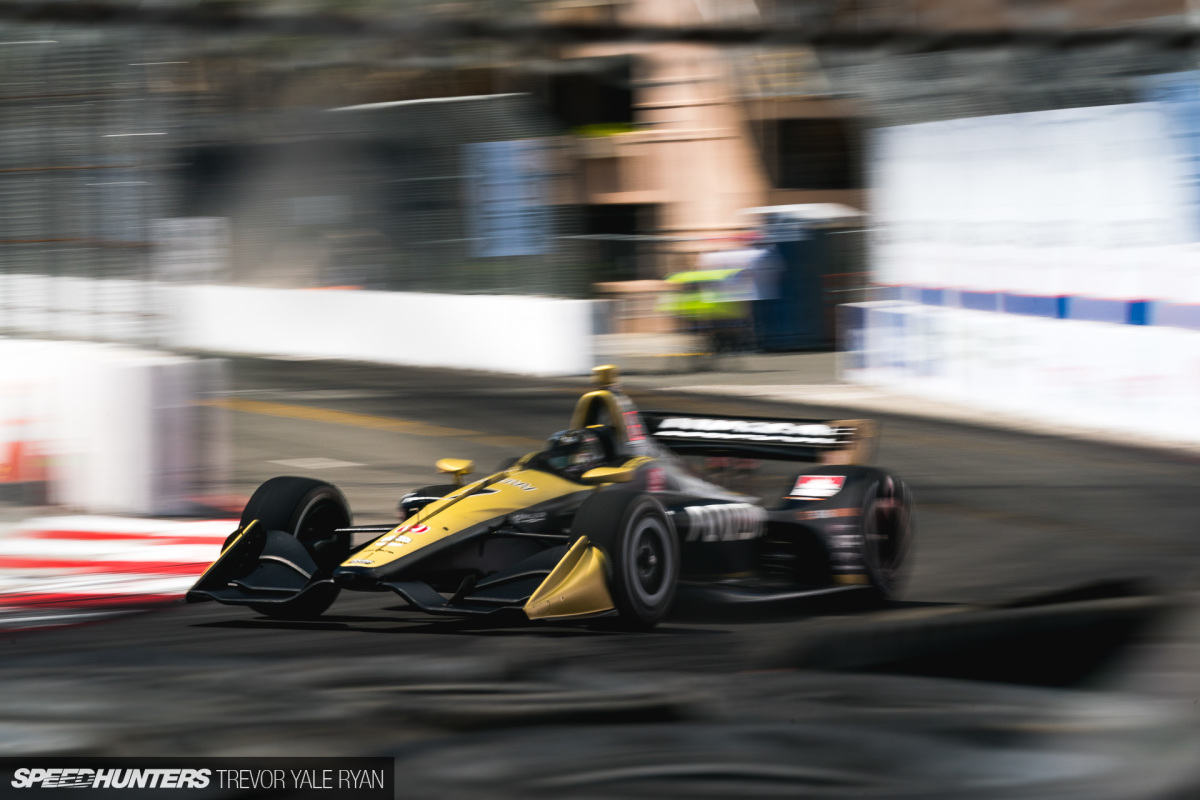
Sony Alpha a9, 70-200mm f/2.8 lens.
Exposure: 1/50sec at f/11 (ISO 50)
Same corner, similar focal length, but an entirely different photo. Each have their merits, the choice is up to you.
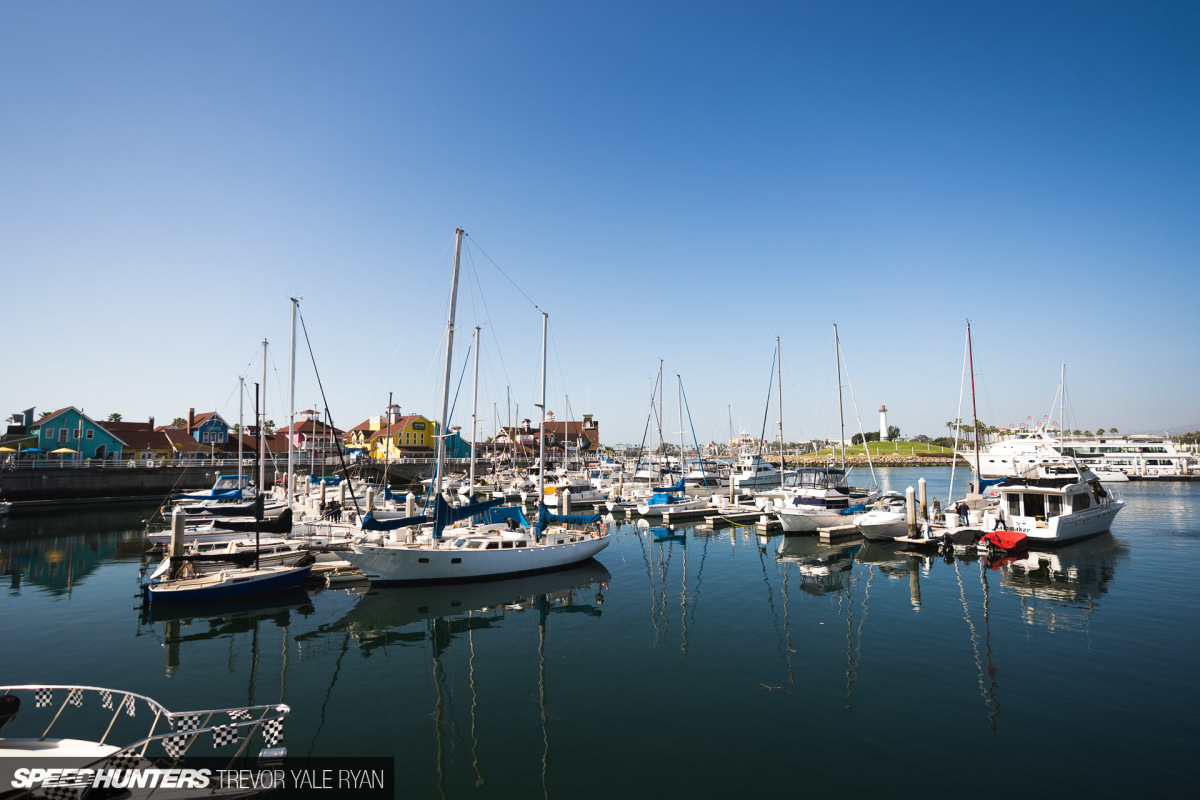
Sony Alpha a9, 16-35mm f/2.8 lens.
Exposure: 1/160sec at f/11 (ISO 100)
On the subject of aperture, this was shot with a wide depth of field so the boats and the background would both remain relatively sharp.
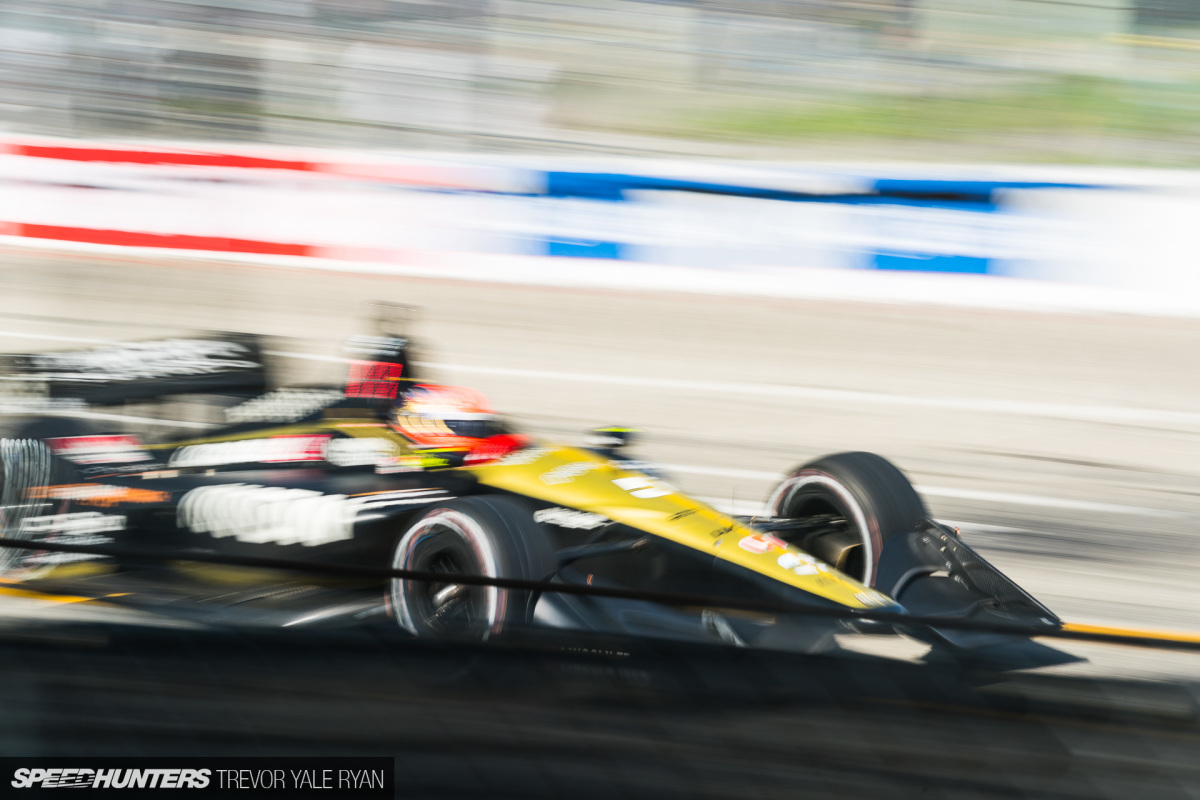
Sony Alpha a9, 70-200mm f/2.8 lens.
Exposure: 1/25sec at f/11 (ISO 50)
This photo happens to use the same aperture setting, although here the purpose of the small aperture is to balance the longer shutter speed in terms of the amount of light hitting the sensor.
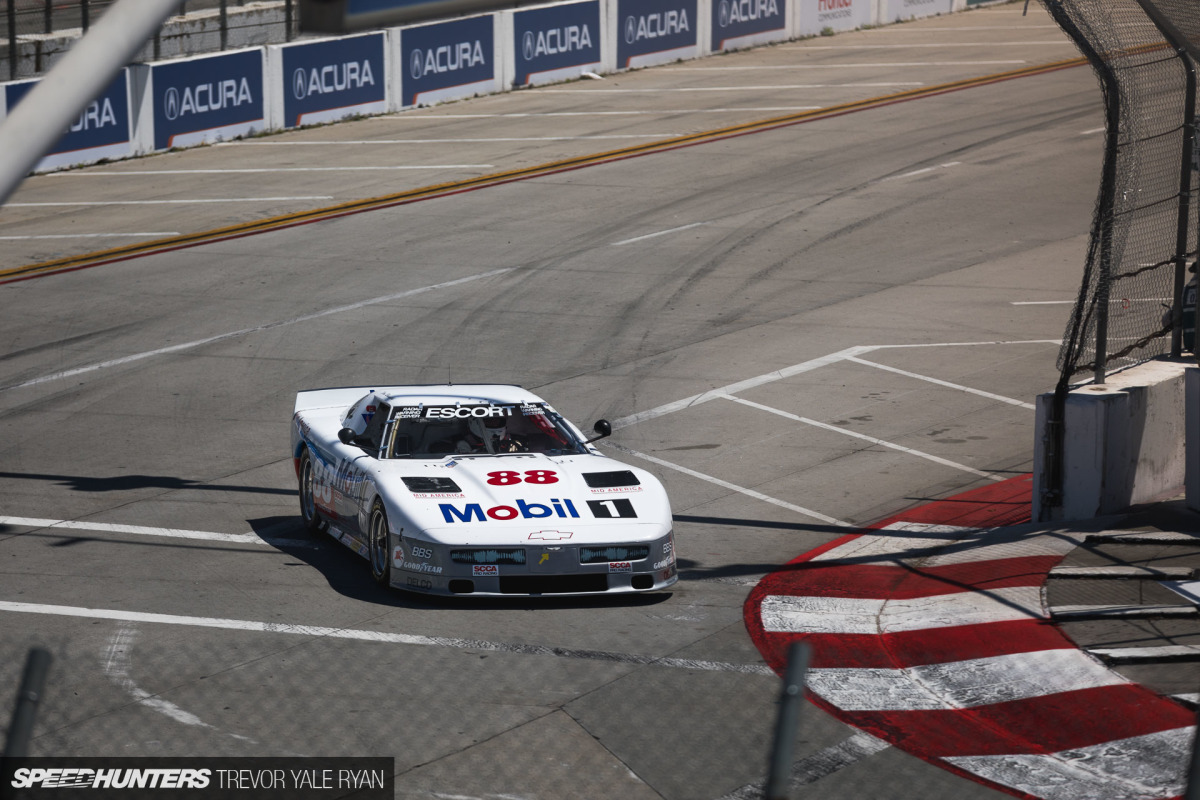
Canon EOS 5D Mark IV, 70-200mm f/2.8 lens.
Exposure: 1/1250sec at f/3.5 (ISO 100)
When it comes to using your aperture to dictate your depth of field – which is how I normally think of it – it’s important to remember that your depth of field is entirely relative. Here I shot at f/3.5, but everything in the photo is relatively sharp around the car.
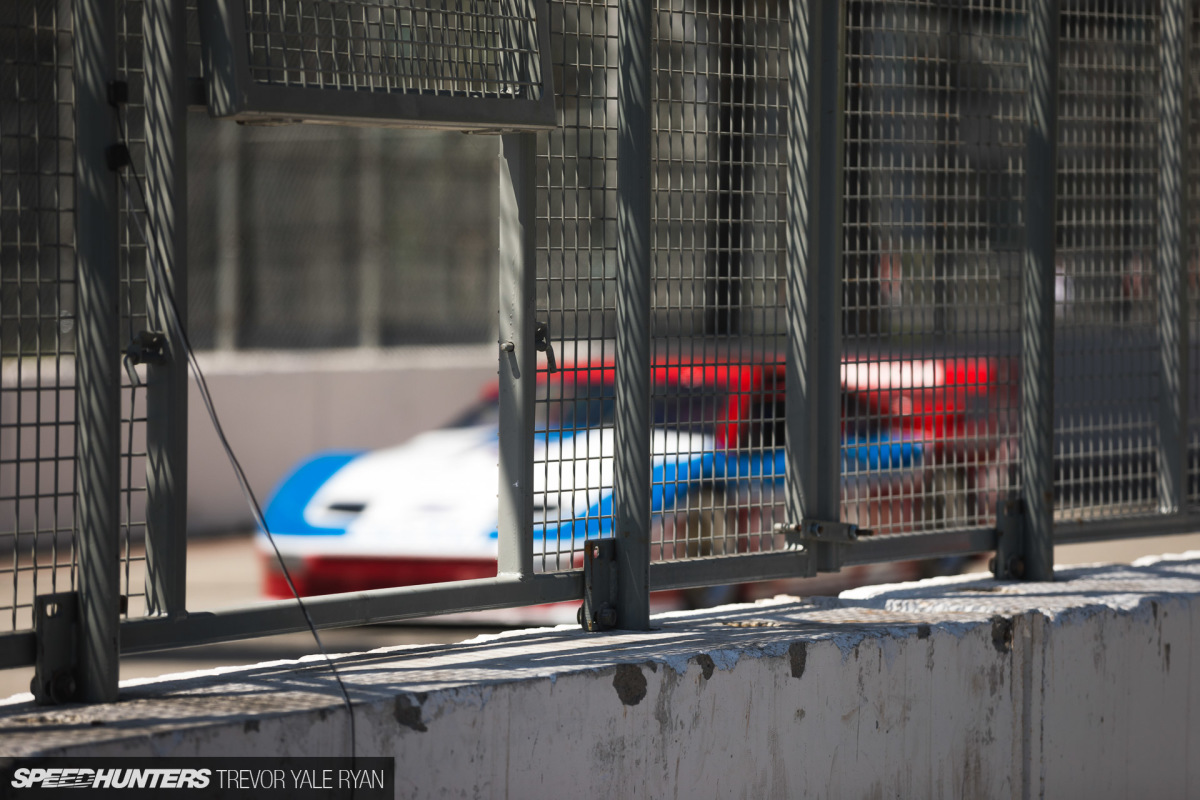
Canon EOS 5D Mark IV, 70-200mm f/2.8 lens.
Exposure: 1/800sec at f/3.5 (ISO 100)
This shot was taken with the same lens (both at 200mm), and yet f/3.5 results in a depth of field which is many times smaller than in the previous photo. The closer your subject is to your lens, the shallower your depth of field becomes. I honestly haven’t taken the time to understand the physics behind why this happens, but it’s something to be very aware of when choosing your settings.
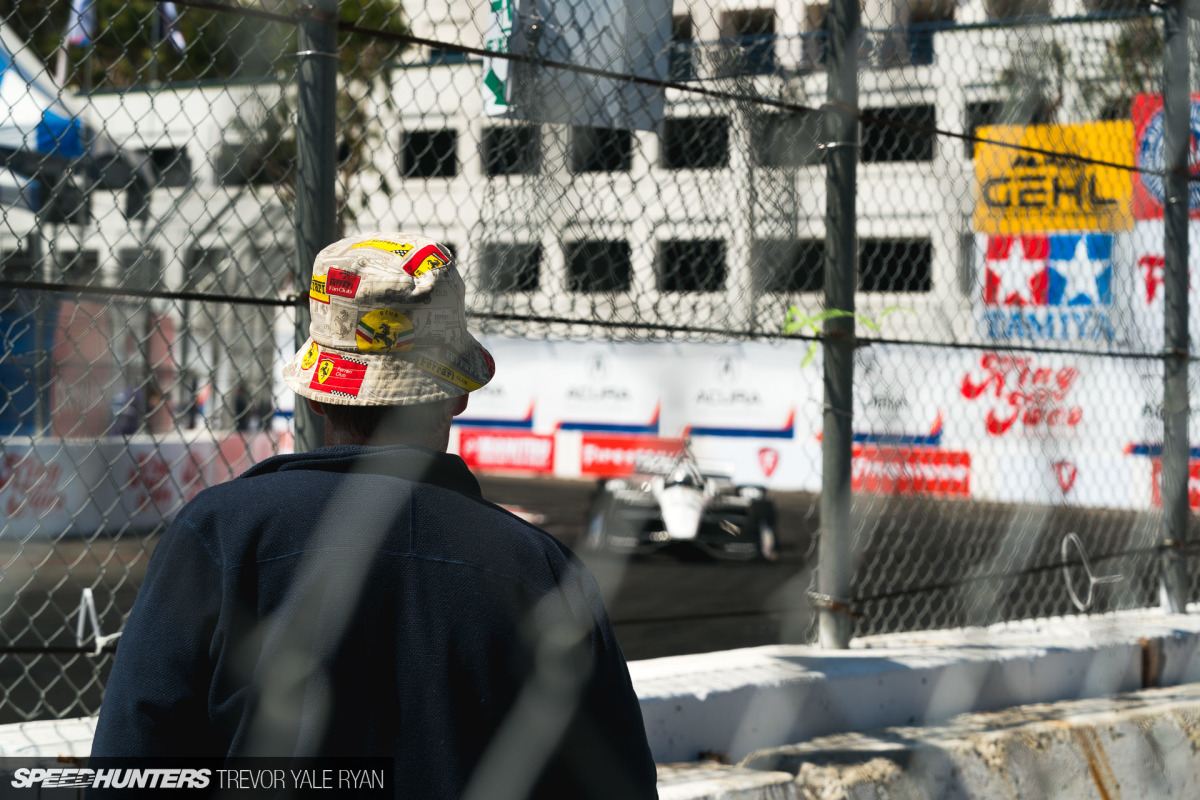
Sony Alpha a9, 70-200mm f/2.8 lens.
Exposure: 1/500sec at f/7.1 (ISO 200)
While the previous photo window wasn’t so useful, I found one later in the day that would serve to produce some images which look like they were taken trackside.
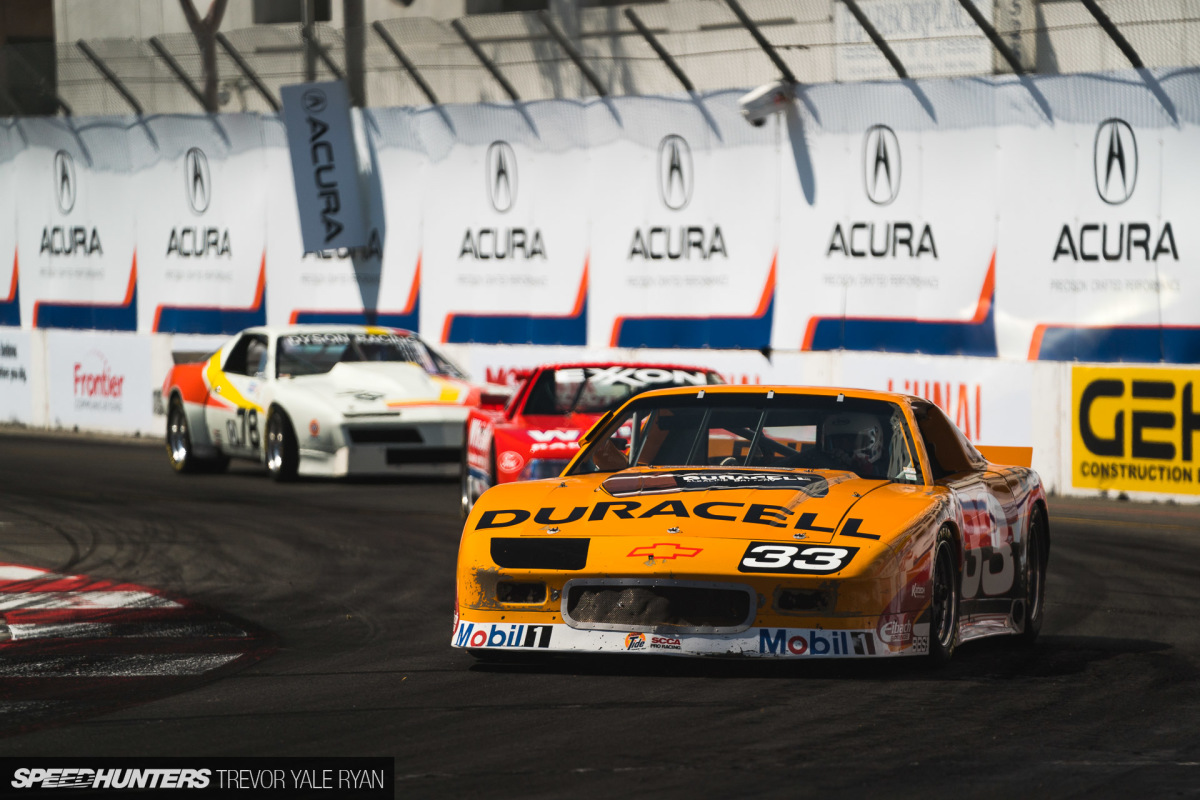
Sony Alpha a9, 70-200mm f/2.8 lens.
Exposure: 1/3200sec at f/2.8 (ISO 100)
This is at Turn 9 on the circuit, and although I tried to stay away since I was shooting here the previous weekend for Formula Drift this angle proved to be one of the best.

Sony Alpha a9, 70-200mm f/2.8 lens.
Exposure: 1/30sec at f/22 (ISO 100)
This shot is from the other side of the track where I was able to make use of another photo window. Of course, there’s still one fence between you and the window, so you’ll have to use a bit of a slower speed than you ordinarily might when you’re panning to blur it out.
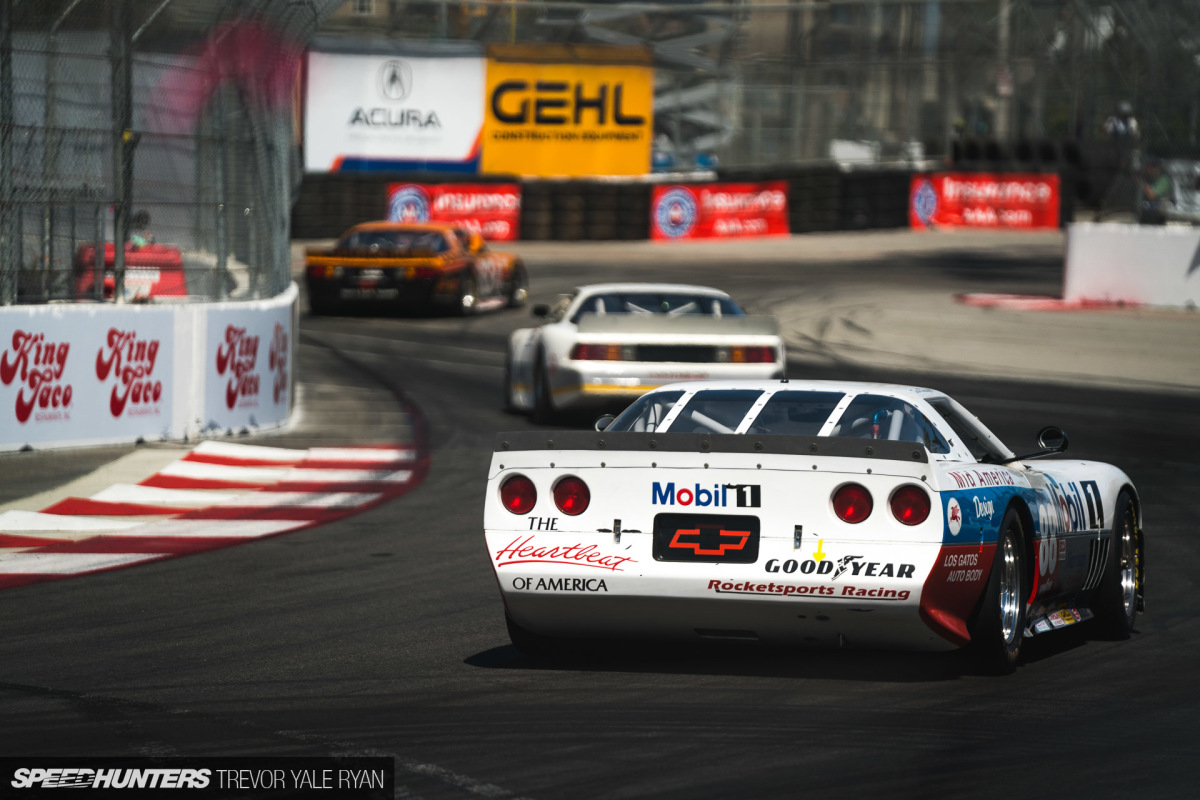
Sony Alpha a9, 70-200mm f/2.8 lens.
Exposure: 1/3200sec at f/2.8 (ISO 100)
Moving down the FD layout, this shot shows the entry into the final hairpin. The fence directly in front of me has all but entirely disappeared thanks to a shallow depth of field. I’m also shooting wide open here at f/2.8 to isolate the Corvette and allow the other cars to fade into the background.
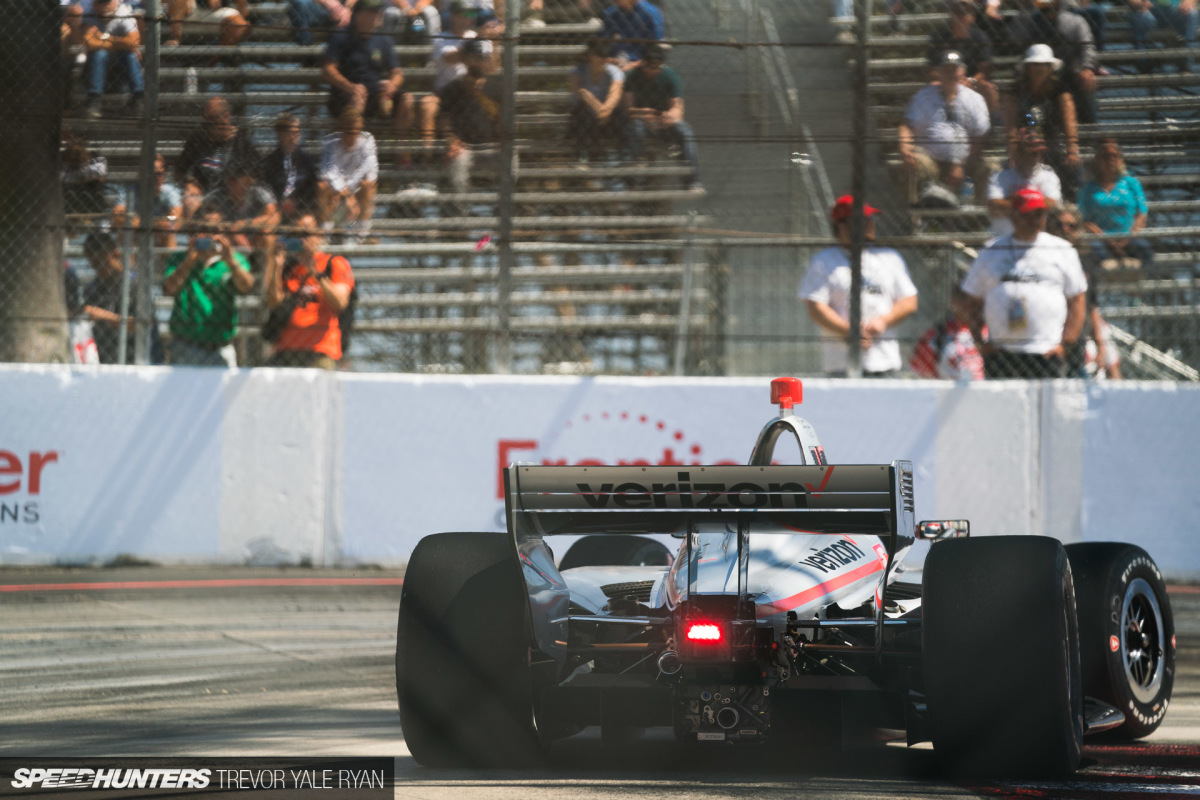
Sony Alpha a9, 70-200mm f/2.8 lens.
Exposure: 1/1600sec at f/2.8 (ISO 200)
If you can’t find a photo window, try using a set of fences that are as close to you as possible. The best spot I found for this was at the last hairpin on the track, but I was shooed off fairly quickly. Keep in mind, if you’re using the f/4 version of the 70-200mm you won’t have quite as much luck.
Focal Length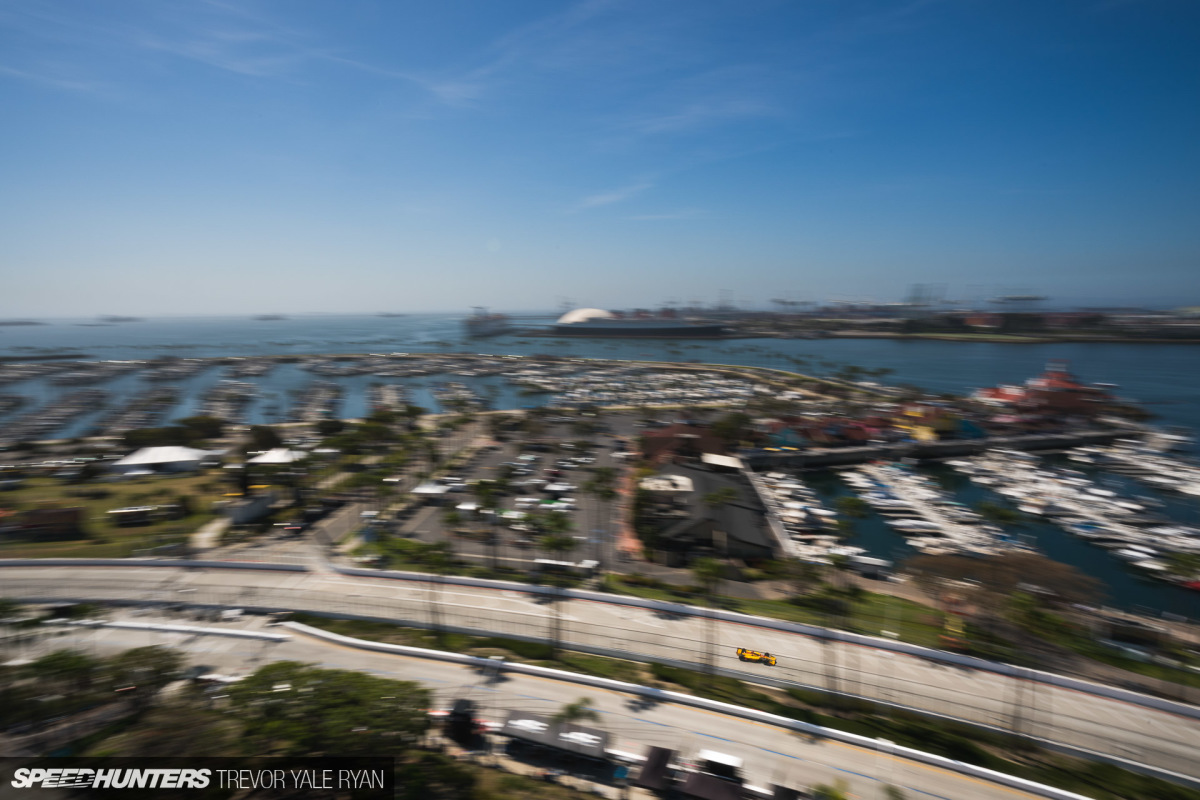
Sony Alpha a9, 16-35mm f/2.8 lens.
Exposure: 1/40sec at f/22 (ISO 50)
Another major factor that shapes your images is the focal length you’re using. This was at about 19mm…
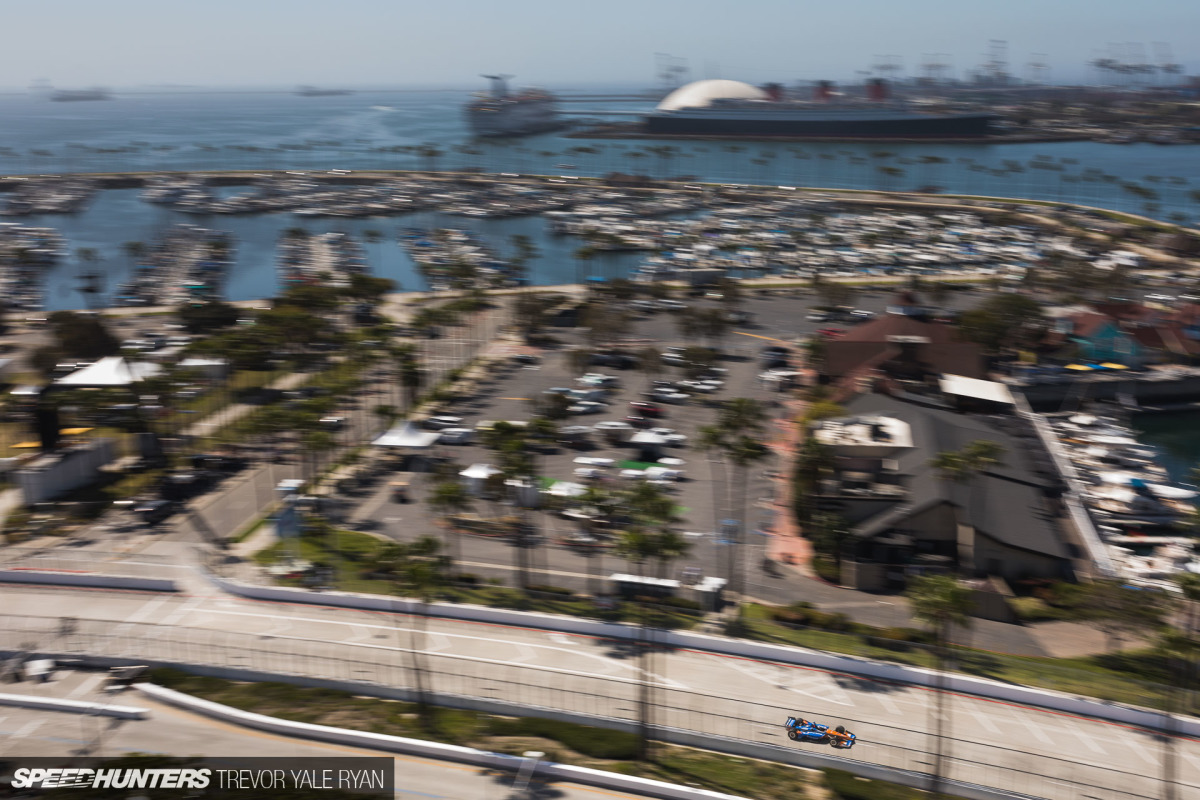
Canon EOS 5D Mark IV, 35mm f/1.4 lens.
Exposure: 1/60sec at f/7.1 (ISO 50)
While this shot was taken at 35mm.
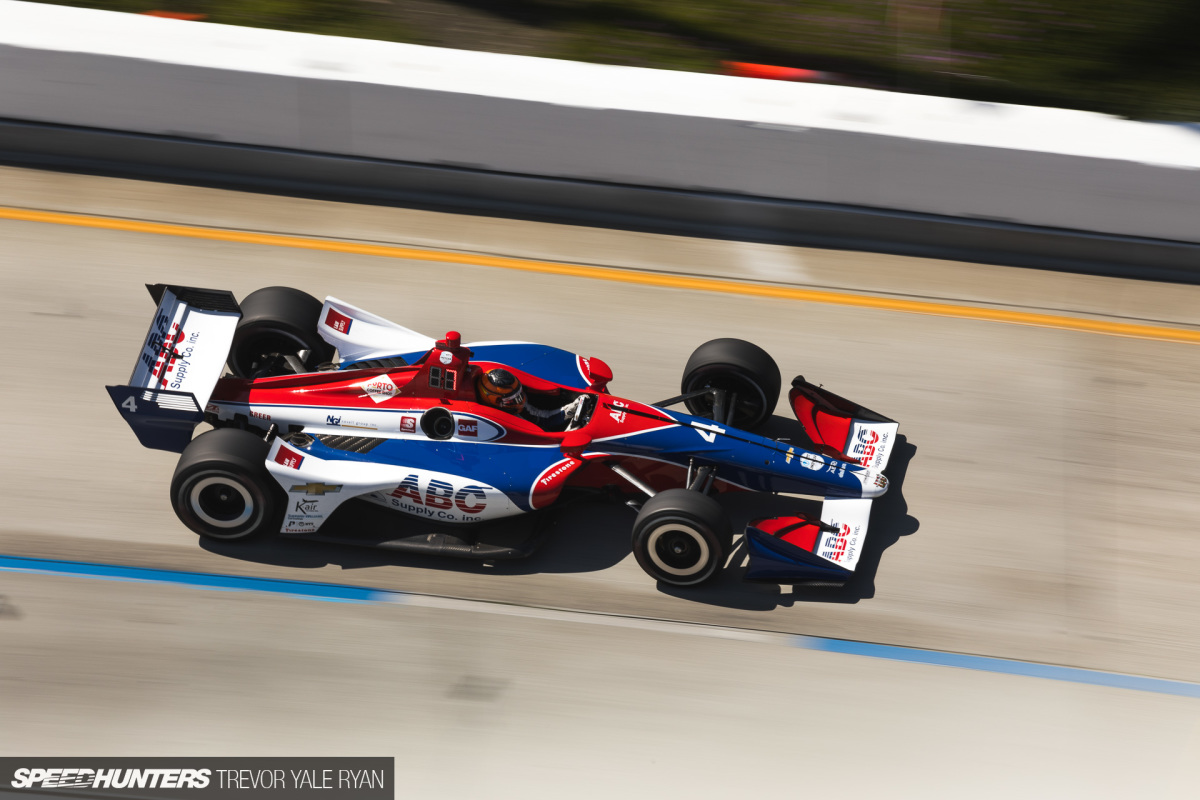
Canon EOS 5D Mark IV, 100-400mm f/4.5-5.6 lens.
Exposure: 1/60sec at f/18 (ISO 50)
Meanwhile this shot was taken towards the 400mm side of my telephoto zoom. I wish I’d spent more time here and captured a photo with the shadows of a palm tree in it, as this shot alone doesn’t provide much context.
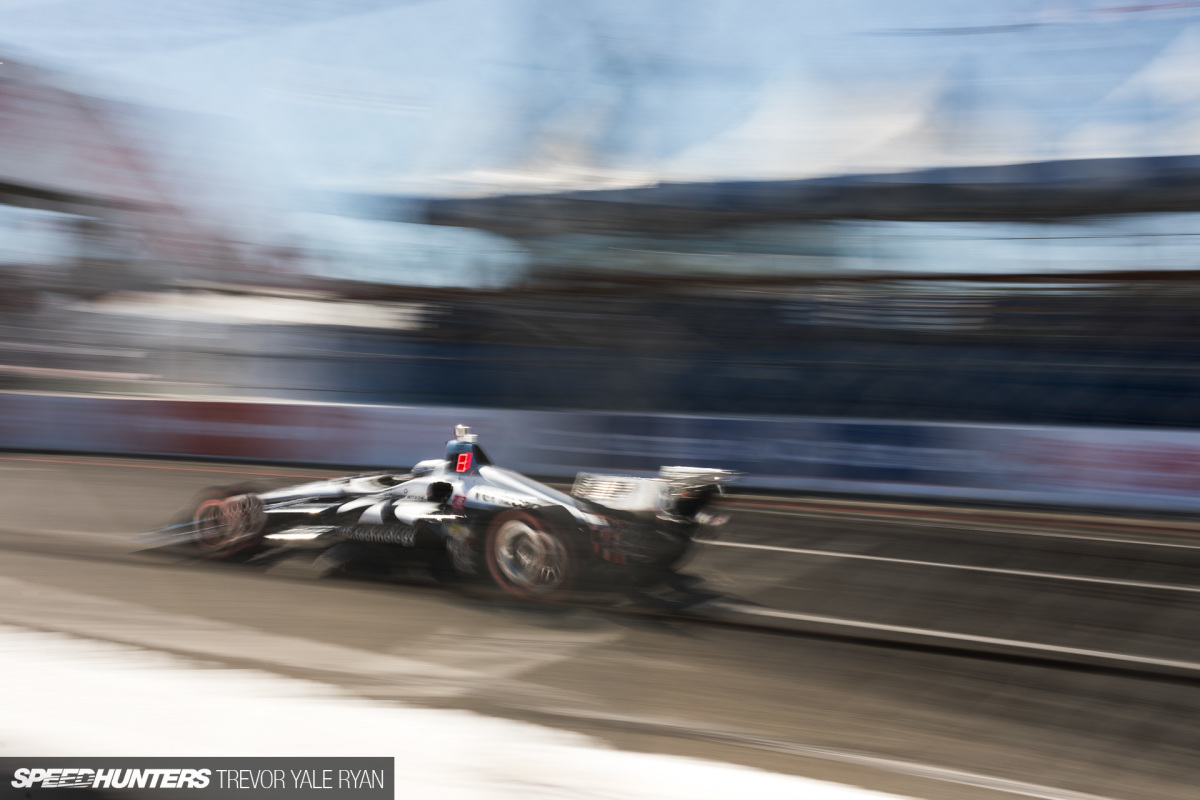
Canon EOS 5D Mark IV, 35mm f/1.4 lens.
Exposure: 1/25sec at f/13 (ISO 50)
Focal length is also useful to portray speed differently in your photos.
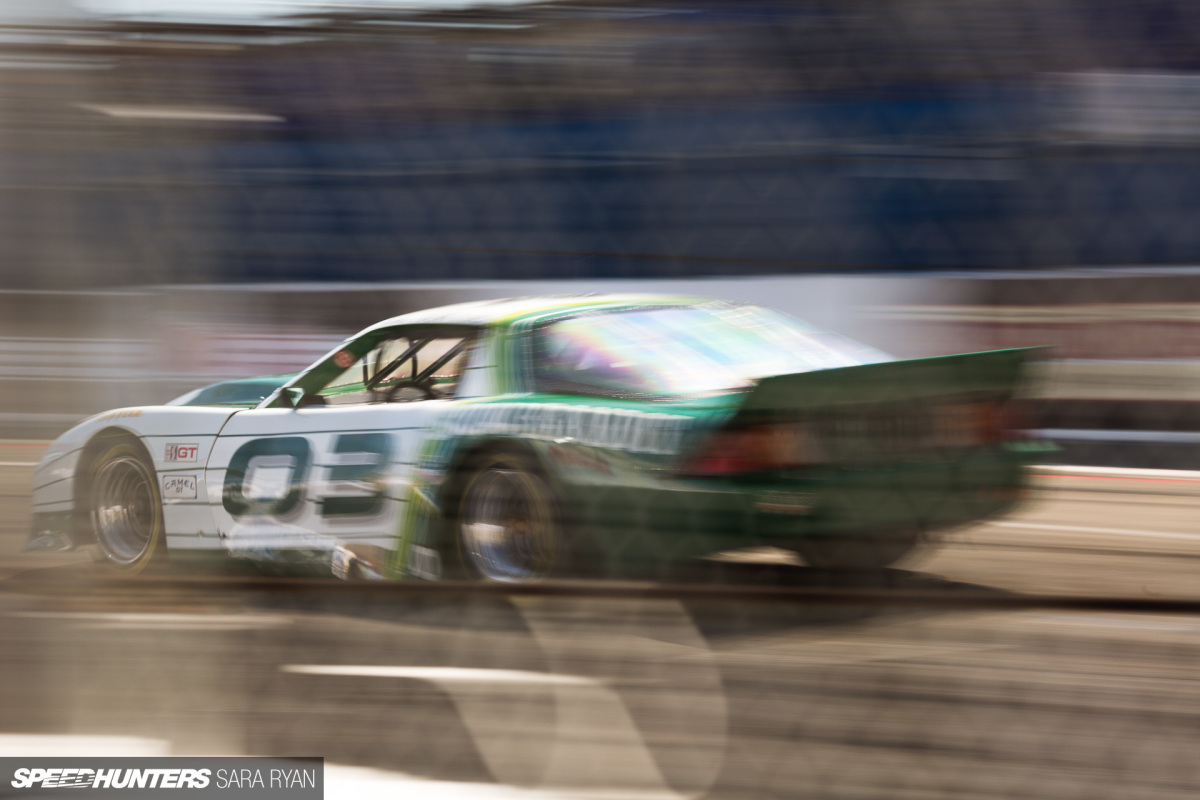
Canon EOS 5D Mark III, 135mm f/2.0 lens.
Exposure: 1/25sec at f/13 (ISO 50)
This shot and the above image were taken from about the same point on the track and both at the same shutter speed, but the results are quite different from each other.
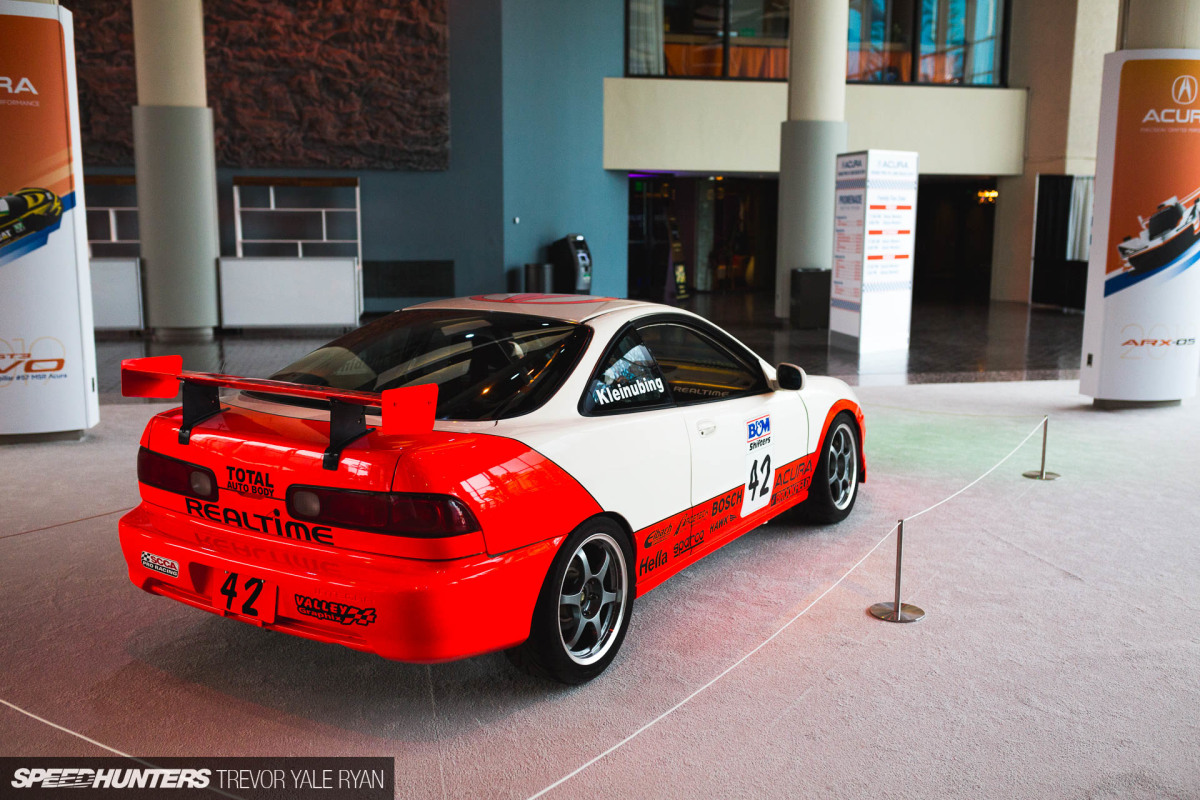
Canon EOS 5D Mark III, 35mm f/1.4 lens.
Exposure: 1/800sec at f/2.2 (ISO 1000)
Different focal lengths have a nice side effect on your images that you can use to your advantage. With a wide angle lens objects farther away tend to vanish onto the horizon, making them look smaller than they would to the naked eye.
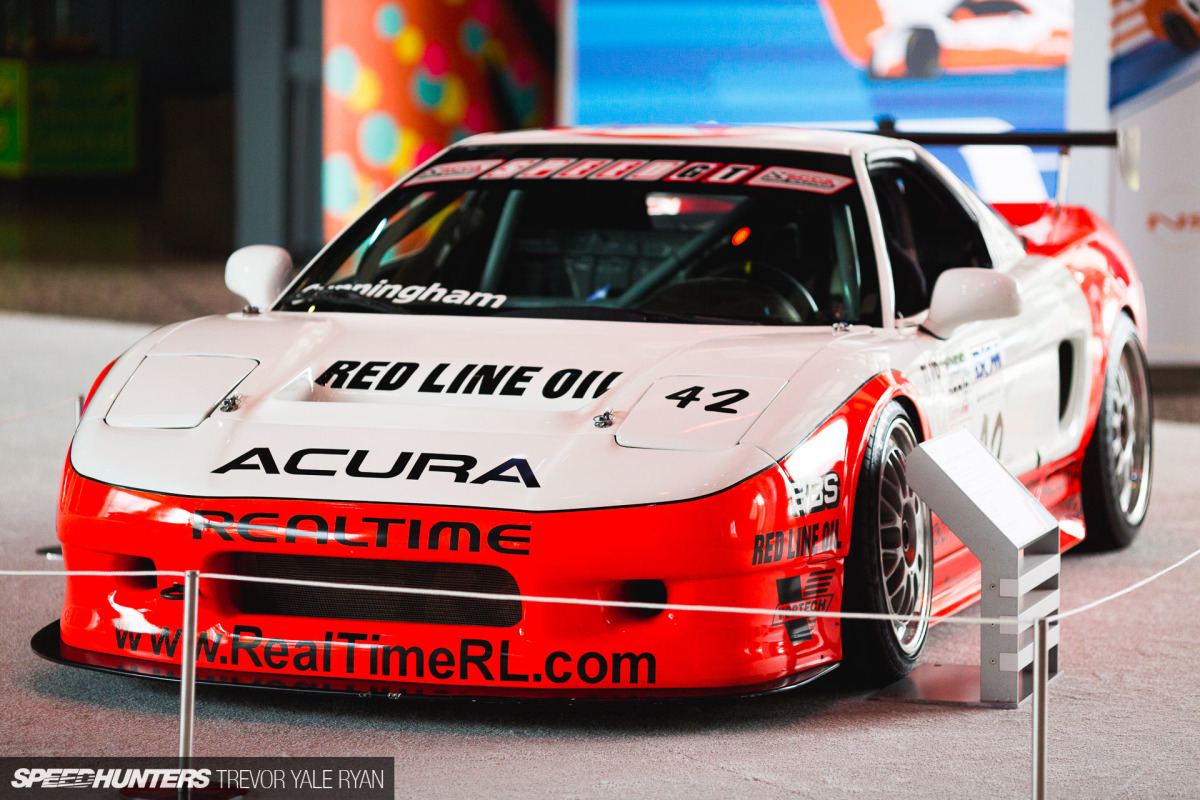
Canon EOS 5D Mark III, 135mm f/2.0 lens.
Exposure: 1/640sec at f/2.2 (ISO 1000)
On the other hand, when you’re shooting with a longer lens the background is compressed, making objects farther away appear larger. This is nice when taking photos of cars head-on, as it makes them look a lot more aggressive than a wide angle would.
I’m leaving off with these Acuras, as the pair – along with one other ’90s Acura racer – will round off my coverage from the Grand Prix of Long Beach in Part III of this mini-series.
Trevor Yale Ryan
trevor@speedhunters.com
Instagram: tyrphoto
TYRphoto.com
Additional Photos by Sara Ryan
Instagram: pockowokosara






Great series so far. I love the behind the scenes look about the photos. It makes me want to dust of the T5i and put it to more better use!
Do it! I started with T2i last summer and an 18-135 kit (ver.1) lens. Just go and shoot!
Thanks, one more coming. And do it!
"This shot was taken with the same lens (both at 200mm), and yet f/3.5 results in a depth of field which is many times smaller than in the previous photo. I honestly haven’t taken the time to understand the physics behind why this happens, but it’s something to be very aware of when shooting."
The depth of field is determined by focal length, distance to subject, and aperture.
The further away you're focusing, the larger the depth of field. That's why when you want to play with bokeh stuff you want longer length lens, but to get the subject closer to you.
Also, as an effect you may (or may not notice) the depth of field isn't centered on the focal distance it's actually more like "1/3 in front of the subject and 2/3 behind the subject".
Yeah, I should probably add a sentence about the effect as it's related to the relative distance from your subject. As far as the 1/3 2/3 thing I wish that was true for my 5Diii, that thing is always front focusing lol.
But what I meant that I don't understand is why a small aperture (say f/22) results in a wider depth of field than a large one like f/2.8 and why it varies based on your distance. I know it does, but l I've never looked up the optical science behind it and can't explain the physical phenomenon that's happening.
Science.
I shot this event on the super photo pass so basically behind the fences as the photo locations weren't particularly useful. Great tips all around. There were some good holes to shoot through up at Turn 1 and the fountain area. Also some good places to shoot from outside the track as well! We exited and spent a few hours shooting from outside before going back in.
How did you like the A9?
That sounds cool in theory, but a bummer the locations they gave you weren't that good. Just being there for the day and trying to fit so much in I unfortunately didn't make it all the way around the track, I'm sure there are lots of other sneaky spots to be found.
As for the A9 it was difficult to get used to, primarily it initially didn't feel right in my hand. Five years of shooting with bigger bodies will do that, but once I set up the custom controls to my liking it was great. I will say it took about half a day to get a feel for it and the digital viewfinder, but towards the end of the day I found myself using it more than my Canon body. The quick framerate was awesome, and the sensor is, unsurprisingly, amazing. Packed with features I couldn't utilize in the one day I had it.
Yeah all the photo spots were elevated and they weren't great about enforcing the pass going to photographers so lots of people just hanging out in the spots. I shot all three days and was still finding new angles by the end. The street course comes with a lot of annoying fences and poles blocking the shot but also a lot more nooks and crannies to find.
 I agree the ergonomics get a bit weird when you put a big lens on it but the battery grip makes a big difference. And it's nice to have the option of taking all that off and getting a really small and minimal body.
I agree the ergonomics get a bit weird when you put a big lens on it but the battery grip makes a big difference. And it's nice to have the option of taking all that off and getting a really small and minimal body.
I shoot with an A7iii so had to make do with a measly 10 fps
Ah, yeah, spots up high are no good. But 10 fps is plenty haha, more than I have on my 5D series bodies.
Yeah, I was using the Sony with a grip, but it it just feels like it was made for smaller hands. I'd also be worried about bashing it about, but the performance is phenomenal. The lighter weight really is nice over a full day, too. It'll be hard to jump the Canon ship though, especially with a dozen or so L series lenses at this point...